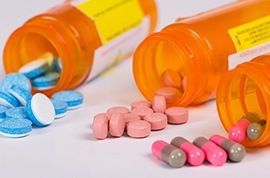The Treatment
Surgery
If conservative treatment options fail to resolve your GORD, your doctor may recommend a surgical procedure called Fundoplication. Fundoplication surgery reinforces the lower oesophageal sphincter's ability to close and helps to prevent gastro-oesophageal reflux from occurring. This surgery can be performed laparoscopically through tiny incisions in the abdomen in most people.

Procedure
Fundoplication is performed under general anaesthesia and most patients spend a couple of nights in hospital.
Steps involved in Fundoplication procedure include:
- Your surgeon makes five small incision in the upper abdomen and inserts telescope and a number of other instruments into the abdomen. The procedure is done watching a monitor.
- With the images from the laparoscope as a guide, your surgeon wraps the upper part of the stomach, (called the fundus), around the lower oesophagus to create a valve, suturing it in place.
- The hole in the diaphragm through which the oesophagus passes is then tightened with sutures.
- The laparoscope and other instruments are removed and the gas released.
- The tiny incisions are then closed.
Post–operative information
After the surgery, the wounds are covered with waterproof dressings so you can shower. They should be removed after 7 days. You may feel soreness around the incision areas. As the abdomen was distended with gas, you may experience discomfort in the abdomen, chest, or shoulder area for a couple of days. Contact your doctor immediately if you have a fever, chills, increased pain, bleeding or fluid leakage from the incisions, chest pain, and shortness of breath, leg pain or dizziness.
Benefits of this approach
Laparoscopy is much less traumatic to the muscles and soft tissues than the traditional method of surgically opening the abdomen with long incisions. It is also associated with a shorter hospital stay, less post-operative pain and faster recovery.
Outcome
Surgery is found to be beneficial in approximately 90% of patients. However, as with any surgery, Fundoplication may involve certain side effects. These can include trouble swallowing, inability to burp or vomit, bloating and passing more wind. These side effects do not occur in everyone.
Post-op stages of recovery and care plan
Your surgeon may give you a prescription pain medicine or recommend non-steroidal anti-inflammatory drugs (NSAIDs) for the first few days to keep you comfortable. Your surgeon may instruct you about your diet and activity restrictions. Care should be taken with your wound. You are advised not to lift heavy objects for 8 to 12 weeks.
Down-time - lifestyle or off work duration
Shortly after surgery you can gradually resume your daily activities. You are encouraged to start walking as early as possible to reduce the risks of blood clots and pneumonia. You will be able to get back to work in 2 to 3 weeks.
Costs
Any costs involved will be discussed with you prior to your surgery.
Research
Extensive research is being done to find better treatment options for GORD
- Gastroesophageal reflux disease (GERD): a review of conventional and alternative treatments. Altern Med Rev. 2011 Jun; 16(2):116-33. 3





